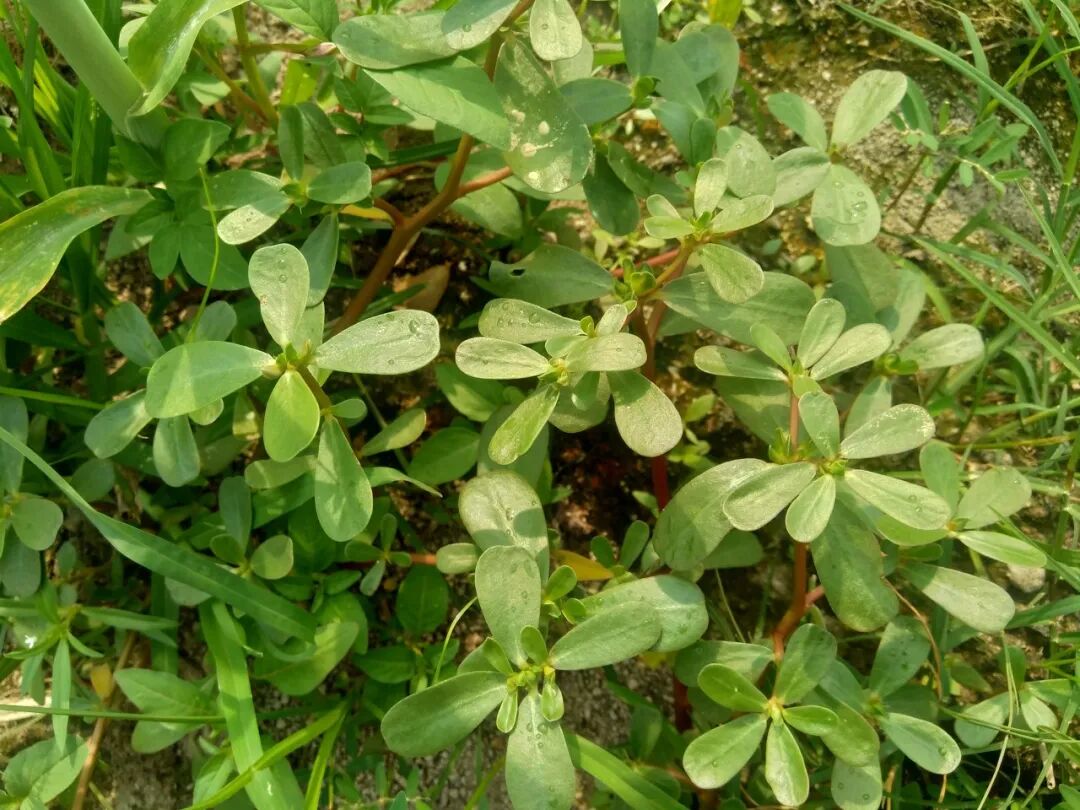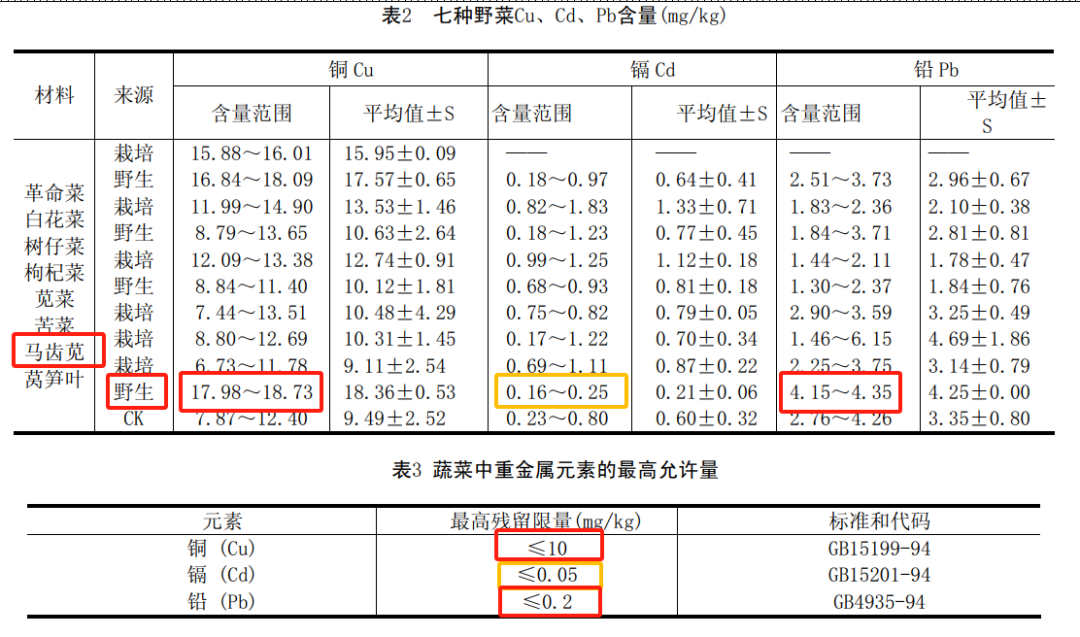There is a wild vegetable that often appears in fields and along roadsides, which was once considered “pig food”; however, due to its high nutritional value, it is now referred to as a “longevity vegetable.” This resilient wild vegetable is known as purslane.
Purslane, also known as “moth grass,” “longevity vegetable,” “five-element grass,” “horse grass,” and “five-direction grass,” has a history of thousands of years in China. In addition to its natural growth, many cultivated varieties of purslane can now be found in farmers’ markets and vegetable markets.

Image copyright, unauthorized reproduction may lead to copyright disputes.
The nutritional value of purslane
Li Shizhen described purslane as “its leaves are like horse teeth, and its nature is smooth and beneficial like amaranth,” which is how it got its name.
Purslane is a succulent plant with thick, juicy leaves that are bright green, appearing rather unremarkable. Due to its rapid growth and easy propagation, it has long been regarded as a weed.
Purslane is extremely resilient, able to survive even in drought and saline-alkali soils. It is widely distributed in various regions of Northeast China, Shandong, and Fujian, and can also be found in temperate and tropical areas around the world, such as Europe, North Africa, the Middle East, and Asia.
In recent years, as people have become more health-conscious, the nutritional value of purslane has gradually been recognized, making it a popular health food.
1
Omega-3 Fatty Acids
The most notable nutritional value of purslane is its very high content of omega-3 fatty acids. It is known that plant-based foods generally contain very little omega-3 fatty acids, with 100 grams of fresh purslane leaves containing about 300-400 mg of omega-3 fatty acids, which is higher than that found in sea bass and hairtail, approximately twice the content of hairtail. Since most plant-based foods lack omega-3 fatty acids, purslane is also considered one of the richest plant sources of alpha-linolenic acid.
Alpha-linolenic acid is an omega-3 fatty acid that is crucial for human growth, development, prevention of various cardiovascular diseases, and maintaining a healthy immune system. Due to the general lack of omega-3 fatty acids in diets, many people cultivate purslane for consumption. For those who do not eat fish and do not take fish oil or algal oil supplements, purslane is an excellent food source for omega-3 fatty acids.
2
Protein
Every 100 grams of purslane contains approximately 2.3g of protein, which is relatively high among plant-based foods, comparable to fresh legumes like lentils and green beans, and is 7.7 times that of winter melon, 3.3 times that of white radish and pumpkin, and 2.9 times that of fresh kidney beans and round eggplants.
3
Vitamins
The vitamin content in purslane is also quite impressive, especially vitamin C, with about 23mg per 100 grams, comparable to citrus fruits, which is 16.4 times that of plums, 7.7 times that of apples and dragon fruit, and 5.8 times that of apricots, far exceeding many common fruits and vegetables. Vitamin C, as a powerful antioxidant, can protect the body from damage caused by free radicals and prevent various diseases. In addition to vitamin C, purslane is also rich in antioxidants such as beta-carotene and vitamin E, which play important roles in protecting vision, skin health, and immune function.
4
Minerals
In terms of minerals, purslane is equally impressive. It is rich in calcium, with about 87mg of calcium per 100g, making it a good vegetable for calcium supplementation. It is also high in potassium (494mg/100g) and magnesium (68mg/100g), which are beneficial for lowering blood pressure and heart health.
In addition to the above outstanding nutrients, purslane contains norepinephrine, which can promote insulin secretion, helping to lower blood sugar levels. Additionally, the sticky component in purslane is actually polysaccharides, which also help to slow the rise in blood sugar levels. A systematic review and meta-analysis indicated that purslane can significantly lower plasma fasting blood sugar levels.

Image copyright, unauthorized reproduction may lead to copyright disputes.
How to Eat Purslane?
Purslane has a water content of over 90%, making it juicy and refreshing. Unlike other wild vegetables, purslane does not have a bitter or astringent taste, but has a slight salty and sour flavor, which is why it is called “sour vegetable” in regions like Fujian.
All parts of purslane are edible, and its preparation varies by country.
Indigenous Australians make cakes from purslane seeds. Greeks mix its leaves and stems with feta cheese and other ingredients to make salads, stews, or casseroles. Turks cook it as a vegetable, and it can also be made into salads, pastries, or yogurt cucumber sauce. In the Alentejo region of Portugal, purslane is used to make traditional soups, topped with soaked bread, poached eggs, or goat cheese.
In our culinary-rich country, there are even more ways to prepare purslane! You can blanch it and serve it cold, or stir-fry it with dried chili and minced garlic for a refreshing side dish. You can also make fragrant pancakes with purslane and eggs, or stir-fry them together for a delightful aroma. Of course, you can steam it or use it as a filling for buns, dumplings, pies, or steamed buns.

Image copyright, unauthorized reproduction may lead to copyright disputes.
Two Precautions When Eating Purslane
Although purslane is rich in nutrients, there are two important points to consider when consuming it to avoid health risks.
1
Purslane has a high oxalic acid content, it is recommended to blanch it first.
Purslane contains a high level of oxalic acid, up to 1460mg/100g, which can easily combine with calcium in the body to form calcium oxalate precipitates, affecting calcium absorption and utilization, and increasing the risk of kidney stones.
Therefore, it is advisable to blanch purslane in boiling water before consumption to remove most of the oxalic acid.
2
Avoid eating wild purslane, as it may pose a risk of heavy metal contamination.
Wild purslane found by the roadside may be contaminated by car exhaust, pesticides, and other pollutants, potentially containing excessive heavy metals or other harmful substances. These harmful substances can cause damage to the body, so it is advisable to avoid consuming wild purslane found by the roadside.
According to a study by the College of Agriculture at South China Tropical Agricultural University, the levels of lead, cadmium, and copper in purslane were found to be 21 times, 4 times, and 1.8 times the maximum residue limits, respectively.

Image source: Reference 1 Additionally, it is important to note that some people may confuse wild purslane with similar-looking plants, which could lead to poisoning risks. Therefore, if you wish to consume purslane, it is recommended to purchase it from reputable sources or grow it yourself.
References
[1] Tang Qunfeng, Tang Shumei. Determination of Copper, Cadmium, and Lead Levels in Seven Wild Vegetables and Evaluation of Their Pollution Status [C]// Collection of Excellent Papers on Environmental Protection in China. 2005. DOI: ConferenceArticle/5aa42985c095d72220c305a9.
[2] Teixeira, M.; Carvalho, I.S. (2008-09-12). “Effects of salt stress on purslane (Portulaca oleracea) nutrition”. Annals of Applied Biology. 154 (1): 77–86. doi:10.1111/j.1744-7348.2008.00272.x. ISSN 0003-4746
[3] Wikipedia. Portulaca oleracea
[4] Uddin MK, Juraimi AS, Hossain MS, Nahar MA, Ali ME, Rahman MM. Purslane weed (Portulaca oleracea): a prospective plant source of nutrition, omega-3 fatty acid, and antioxidant attributes. ScientificWorldJournal. 2014 Feb 10;2014:951019. doi: 10.1155/2014/951019. PMID: 24683365; PMCID: PMC3934766.
[5] Zhou Sannü, Liu Liqing, Wu Xianhui, Tian Yanji, Pan Bin. Differences in Oxalic Acid Content in Freshly Blanched and Different Harvest Periods of Purslane [J]. Agricultural Product Processing, 2016(23):52-54. DOI:10.16693/j.cnki.1671-9646(X).2016.12.014.
[6] A P Simopoulos (2013). “Common purslane: a source of omega-3 fatty acids and antioxidants”. Journal of the American College of Nutrition. 11 (4): 374–382. doi:10.1080/07315724.1992.10718240. PMID 1354675
[7] Jafari, N., Shoaibinobarian, N., Dehghani, A., Rad, A., Mirmohammadali, S. N., Alaeian, M. J., Hamedi, Y., Zamani, M., Goudarzi, M. A., & Asbaghi, O. (2023). The effects of purslane consumption on glycemic control and oxidative stress: A systematic review and dose–response meta-analysis. Food Science & Nutrition, 11, 2530–2546. https://doi.org/10.1002/fsn3.3311
Planning and Production
Reviewed by: Ruan Guangfeng, Deputy Director of the Food and Health Information Exchange Center
Planned by: Zhong Yanping
Edited by: Zhong Yanping
Proofread by: Xu Lai, Lin Lin
Related Articles
1. This fruit provides enough vitamin C with just 3 pieces! Here are 5 ways to eat it, saving money and being delicious!
2. If you have these 4 symptoms, it indicates your brain is starting to age! Here are 7 methods to slow down brain aging.
3. Always feeling tired? It might just be a lack of vitamin D! The real reason is…
4. If these major symptoms appear, your cervical spine is sending a warning! 6 preventive measures you must see!
5. An extremely simple full-body workout that is cheap, effective, and can be done at home! Give it a try!
The cover image and images in the article are from copyright-protected stock images.
Unauthorized reproduction may lead to copyright disputes. For original text and images, please reply “reprint” in the background.

Light Up “See”
Let’s gain knowledge together!
